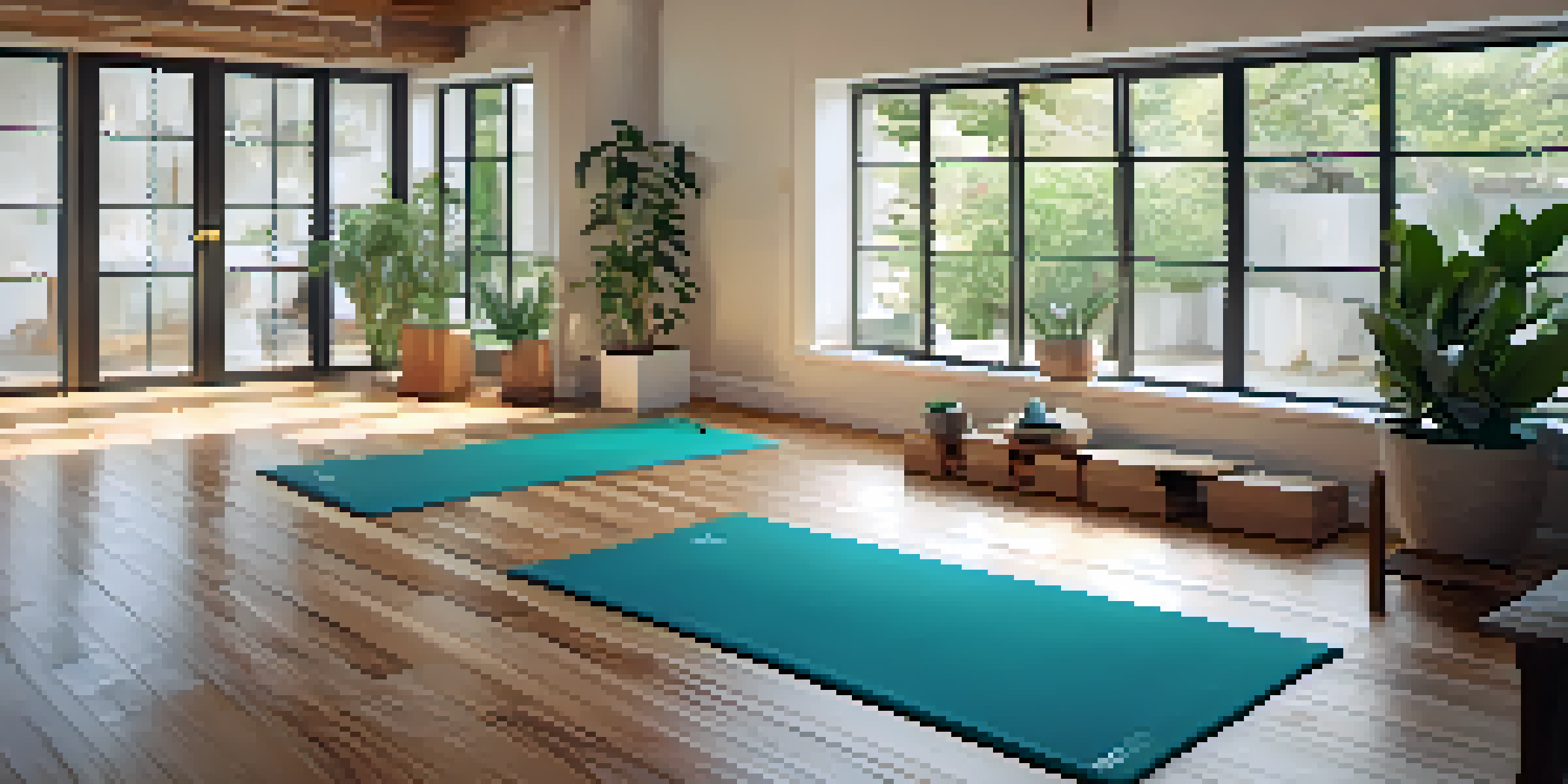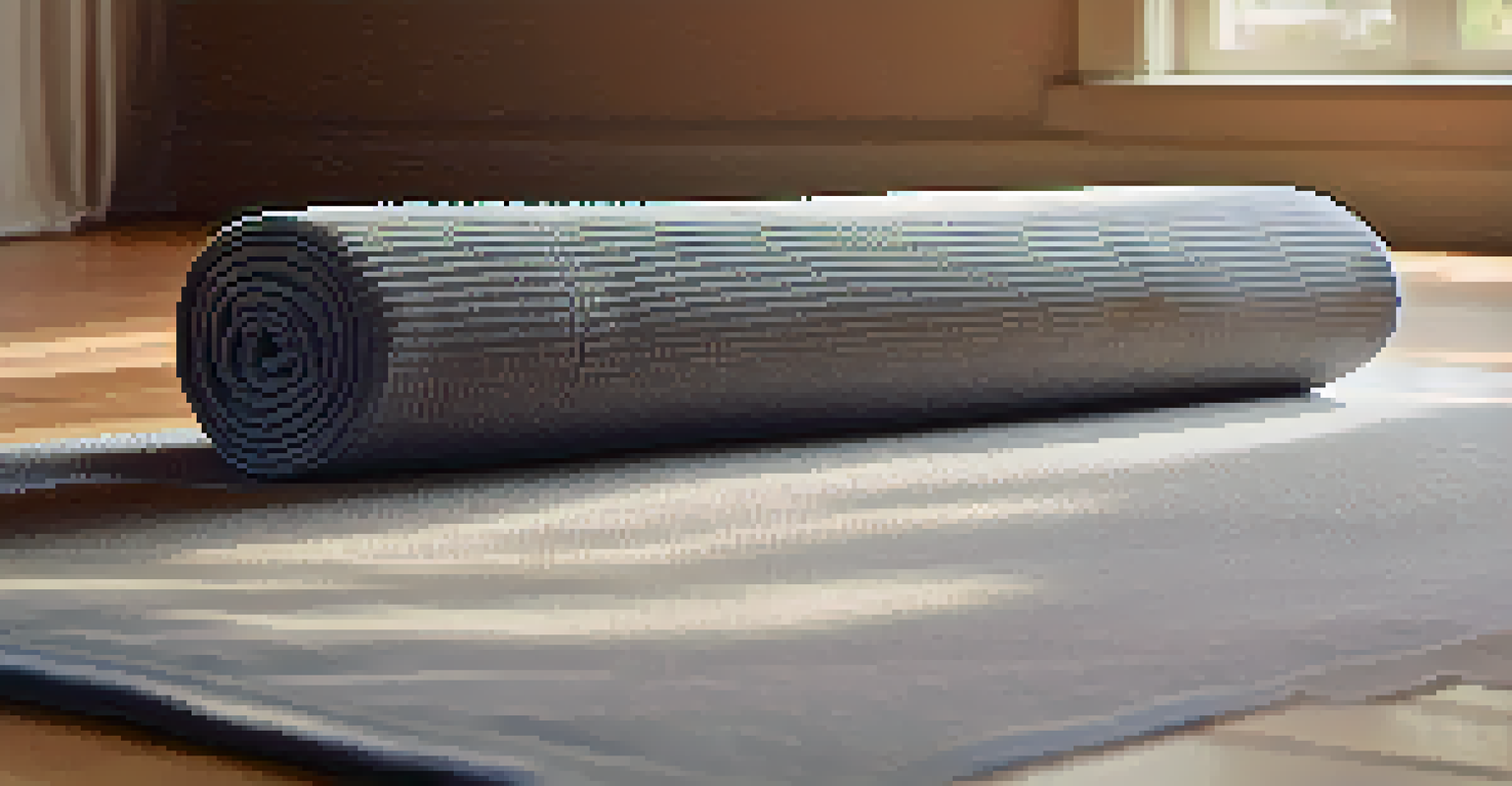The Role of Props in Enhancing Restorative Yoga Practices

Understanding Restorative Yoga and Its Benefits
Restorative yoga is a gentle form of yoga focused on relaxation and healing. Unlike more vigorous styles, it emphasizes slow movements and long-held poses to soothe the mind and body. The primary goal is to activate the parasympathetic nervous system, promoting a deep sense of calm and recovery.
Yoga is the journey of the self, through the self, to the self.
Participants often find restorative yoga beneficial for stress relief, improved sleep, and enhanced emotional well-being. This style of yoga encourages mindfulness and self-awareness, allowing practitioners to reconnect with their bodies. By fostering a supportive environment, restorative yoga invites deeper introspection and relaxation.
It's essential to create a comfortable space for restorative yoga, and that's where props come into play. By integrating various props, practitioners can experience a fuller range of benefits, making their yoga journey even more enriching.
Different Types of Props Used in Restorative Yoga
Props in restorative yoga can include bolsters, blankets, blocks, and straps. Each type has a specific purpose, enhancing comfort and support during poses. For instance, bolsters can provide cushioning and stability, while blankets can help retain warmth and offer additional support.

Yoga blocks are particularly useful for modifying poses, ensuring that practitioners maintain proper alignment without straining. Straps can assist in deepening stretches and improving flexibility. By using these props, individuals can find their ideal position, regardless of their experience level.
Restorative Yoga Promotes Healing
This gentle yoga style focuses on relaxation and mindfulness, activating the parasympathetic nervous system for stress relief and emotional well-being.
Ultimately, the right props can make restorative yoga accessible to everyone, from beginners to seasoned practitioners. Their inclusion allows individuals to focus on relaxation rather than physical discomfort, creating a more enjoyable experience.
How Props Enhance Comfort During Yoga Sessions
One of the primary benefits of using props in restorative yoga is the comfort they provide. Bolsters can cradle the body, allowing muscles to relax fully, which can be especially important for those with tightness or tension. This support encourages practitioners to let go of tension and embrace stillness.
The mind is everything. What you think you become.
Additionally, props can help alleviate pressure on joints and muscles. For example, using a blanket under the knees during a seated pose can prevent discomfort and promote better alignment. This attention to comfort is crucial for achieving the restorative benefits of yoga.
When practitioners feel physically supported, they can focus more on their breath and mental state. This shift encourages a deeper connection between the body and mind, enhancing the overall experience of restorative yoga.
Creating a Safe and Supportive Environment
A key aspect of restorative yoga is creating a safe and calming environment. Props play a significant role in achieving this atmosphere, as they provide the necessary support for relaxation. By setting up a nurturing space with props, practitioners can feel more secure and at ease during their practice.
When the environment feels safe, individuals are more likely to let go of stress and tension. This can lead to deeper relaxation and a more profound restorative experience. The right props allow individuals to settle into poses without fear of injury or discomfort.
Props Enhance Comfort and Support
Using props like bolsters and blankets makes restorative yoga accessible, allowing practitioners to relax deeply without discomfort.
Moreover, a supportive environment encourages mindfulness, enabling practitioners to focus on their breath and inner sensations. This connection can enhance the healing effects of restorative yoga, allowing practitioners to experience greater emotional balance.
Using Props for Individual Needs and Modifications
Every individual has unique needs when it comes to yoga practice, and props can be tailored to meet those needs. For instance, someone with limited flexibility might benefit from blocks to help maintain proper alignment in poses. By customizing the use of props, practitioners can find their ideal level of comfort.
Additionally, props can be adjusted based on personal preferences. Some individuals may prefer using a bolster for support in a restorative pose, while others might find a blanket more comfortable. This flexibility allows practitioners to explore different options and discover what feels best for their bodies.
Ultimately, the use of props empowers individuals to take ownership of their practice. By listening to their bodies and making necessary modifications, practitioners can enhance their restorative yoga experience and achieve a deeper state of relaxation.
The Psychological Benefits of Using Props
Beyond the physical comfort that props provide, they also offer psychological benefits. Knowing that support is available can help reduce anxiety and fear during practice. This reassurance allows practitioners to engage more fully with their experience and embrace the restorative aspects of yoga.
Furthermore, props can create a sense of security, allowing individuals to explore their emotions more freely. For example, using a blanket for support might encourage someone to release pent-up feelings, promoting emotional healing. This emotional release can be a crucial component of the restorative yoga journey.
Personalized Approach with Props
Props can be tailored to individual needs, empowering practitioners to modify their practice for optimal comfort and relaxation.
The connection between physical support and mental well-being is profound. As practitioners feel safe and supported, they can delve deeper into their practice, enhancing their overall experience and fostering personal growth.
Incorporating Props into Your Restorative Practice
To get started with props in restorative yoga, consider what you have available at home. Simple items like cushions, blankets, or even towels can serve as effective props. Experimenting with different setups can help you find what works best for your body and practice.
When incorporating props, remember that the goal is to create comfort and support. Allow yourself the freedom to adjust props as needed, ensuring that you feel at ease in each pose. The more comfortable you are, the more you can focus on your breath and relaxation.

As you deepen your practice, you may find that certain props resonate more with you. Keep an open mind and be willing to explore different options, as the journey of restorative yoga is personal and unique to each individual.